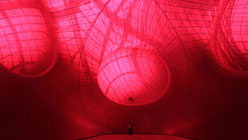Welcome to Help Desk, where I answer your queries about making, exhibiting, finding, marketing, buying, selling — or any other activity related to — contemporary art. Together, we’ll sort through some of art’s thornier issues. Email helpdesk@dailyserving.com with your questions. All submissions remain strictly anonymous and become the property of Daily Serving.
I think it’s great you’re passing on sensible advice regarding the writing of clear, articulate, open gallery texts, but what I need to know how to write are the kinds of texts that make it look like I know a lot more about the work I make than I actually do. Obviously, no top level Frieze, Armory, Basel, FIAC type gallery would touch my work if I could write clearly about it, so is there some secret template for obfuscation, complex-ification and obscurantism into which I might insert my variables, and hey, Voila! my MFA show garners the attention of several hip galleries at once? This is not a joke! I genuinely need your help.
I love this question because I want to make fun of it and I can’t. Just when I am prepared to argue that we all need to write clearly and concisely in order to reach our audience(s), I get something like this in my inbox, delivered on July 31 from MIT Press: “ARTMargins is a new triannual publication that invites researchers and practitioners who operate under the conditions of neoliberal capitalism to critically reflect on what we call the ‘thickened global margin,’ encompassing historical, geographical, as well as philosophical or theoretical post-peripheries.” The part of me that taught English to high school kids wants to sigh, really? , but to be honest, as examples go this one is not even the worst I’ve seen.
So while I’d love to be dismissive of this issue, there are indeed some facts that need to be acknowledged. The first is that, no matter how many educators (self included) make claims for prose that is accessible and intelligible, the truth is that we do operate in a field with its own specialized vocabulary. The second is that arts writing undertakes the process of expressing the aesthetic experience as text, and like any translation something ineffable gets lost along the way. To try to make up for this loss while still working within the circumstances that produced it means that writers essentially scratch around hoping to find a designation that will come closest to what they are attempting to explain. With something as complex and nuanced as art the best we can hope for is that the arrow, once shot, will graze its target; because in translation a true bull’s eye is nearly impossible.





